|
As regards 'tradition', 'lineage' and 'respect' - these are aboth fundamental Chinese cultural aspects which were brought suddenly into the modern world in 1911 (the ‘Nationalist’ Revolution) and 1949 (the ‘Socialist’ Revolution). In Japan, this process began with the Meiji Restoration of 1868. This all evolves around the concept of 'face' (面子 - Mian Zi) - or the ability to walk through the public spaces with one's dignity fully intact and face on display. To traverse the public spaces used to demand a stern adherence to the teachings of 'Confucius' as defined by various philosophers and politicians, etc. Indeed, Confucianism regulated not only the society of China for over two-thousand years, but also many other countries including Korea, Japan, Vietnam and Okinawa (including large areas of South-East Asia). Furthermore, wherever Chinese people have migrated - Confucianism has followed. Confucianism still defines Chinese society, but the way this happens has evolved over the centuries and can still seem baffling to the uninitiated. Regardless of this, understanding ‘Confucianism’ is the only way ‘in’ and ‘out’ of a Chinese cultural grouping. In the old days, breaking these rules led to the breaking of one's body - a simple correlation between spiritual morality and physical punishment. The individual body used to be the property of one's parents and belonged to the State (that is to the 'Emperor'). The body of a child used to represent the continuation of a family's ancestral 'Qi' energy and the lasting of the Clan Surname. Judicial execution often involved public beheading (the 'loss' of face through the loss of the head) – a punitive process which usually including the killing of all members of the same family (depending upon the severity of the offense). Social execution involved the 'exclusion' of an individual and a family (Clan) - from all meaningful social interaction. It is interesting to note that despite the differences in political and economic view that exist between Beijing and Taipei, for instance, Chinese people living in Taiwan and Mainland China would agree (both implicitly and explicitly) about what 'face' is, and about what 'losing' and 'saving' face actually entails - so important is this central aspect of Chinese culture. Today, the forces of modernity have radically redefined this tradition - but occasionally murders and beatings do still occur throughout Chinese society - usually involving disputes regarding love affairs, relationship betrayals and intimate deviations, etc. Of course, if an individual is known to have behaved in a terrible fashion for whatever reason, social ostracization tends to follow. Remember, China is comprised of 56 ethnicities which enlarged through the Chinese diaspora as it intermixes with different people throughout the world. This means that 'saving face' and 'losing face' tends to vary in interpretation. For instance, my modern academic colleagues in China tend not to give 'face' much consideration - but the older members of our Chinese family still live their lives by this concept! Okinawa, for instance, is still being punished by the Mainland Japanese for being historically ‘Chinese’ – and this has involved the post-1945 US Military Bases being lodged of the Island. This US neo-imperialist presence has been compounded by an assault on Ryukyu culture that has been intended to eradicate all obvious ‘Chinese’ cultural tendencies and replace these with a blend of Americana and Nipponisation. Yet the robustness of the Okinawan way of life stands inherently strong – with an older version of ‘Confucian’ ideology lurking firmly in the background and regulating the martial arts, leisure and business communities. Indeed, the Chinese concept of 'face' (面子 - Mian Zi) literally translates as 'Face Child' or 'Face Master'. The second ideogram '子' (zi3) means 'a child that is born already old and wise' - and is associated with 'Laozi' (老子) - one of the founders of Daoism. Perhaps 'Saving Face' would be better redefined as 'Preserving Face'. In England we talk of proudly holding our heads-up high in public.. Of course, in the strict Confucian model, the onus is on the individual rather than the social collective. Today, the social collective is just as responsible as the individual - so that the entirety of society works together to preserve the status quo. Now, it is as if the collective society has its own 'face' that has to be preserved in the 'face' of individual behaviour. It is a two-way street. Individual responsibility is now balanced with collective responsibility - creating a preserving 'tension' of positive interaction. An individual's 'face' is considered secondary and is only saved when the 'face' of orderly society is acknowledged and preserved. Having explained all this, there still exist pockets of Chinese culture spread throughout the world that uphold older versions of ‘Confucian’ ideology and expect all incomers to understand and respect this reality.
0 Comments
Translator's Note: According to the HISTORY of the International Meibukan Goju Ryu Karate-Do Federation - during 1952 Miyagi Chojun gave permission for his leading disciple Mr. Yagi Akitoku [八木明德] (1912-2003) to establish his own Dojo! The following year (in 1953) Miyagi Chojun formally passed the 'robe' and 'belt' to Yagi Akitoku confirming his status as the lineage inheritor of the Goju Ryu Karate-Do lineage. Yagi Akitoku is also known as Yagi Meibukan - as 'Meibukan' (明布馆 - Ming Wu Guan) which translates as 'Bright' or 'Pure' 'Warrior Training Hall' - as this is the name he gave his first Dojo and the manner in which his lineage of Goju Ryu was referred to thereafter. Whilst researching the various histories of Goju Ryu preserved within the 'International Okinawan Goju Ryu Karate-Do Federation' (IOGKF) - I have never come across this man's name! Indeed, it was only whilst researching the history of 'Meibukan' on that Style's Hong Kong site (in preparation for translating this article) that I learned of Yagi Meibukan and the general attitude of respect that abounds for him amongst the martial arts community of China, Okinawa and Japan! I have 'Maria Manalastas' and her 2018 (Chinese language) article conveying her journey to Okinawa and her training in the Karate-Do of the MURASAKIMURA Dojo! She is a University student from the UK whose ancestry hails from the Philippines. As we have very close ties with the Filipino people - we welcome her interesting article - which I translate here! ACW (10.10.2022) Hello everyone! I'm Maria from the Okinawa Holiday Hackers Editorial Department. It has been four months since I came to Okinawa, and now I am experiencing the Karate-Do Dojo in the kingdom of MURASAKIMURA. There I met Mr. Kinjo, Mr. Kevin and Mr. Florian! Senior Instructor Kinjo (full name ‘金城 敬章’ - ‘Kinjo Hiroaki’) is the Head of the ‘International Meibukan Goju Ryu Karate-Do Federation’ - that is the ‘Bright Martial Training Hall’ which is said to be the ‘true’ and ‘genuine’ inheritor of Goju Ryu Karate-Do tradition as founded by Miyagi Chojun (1888-1953). The ‘Hard - Soft’ (Goju) Style of Karate-Do – as led by Kinjo Hiroaki is a member of the ‘Yomitan’ Branch of the ‘Daoist Alliance’. Mr. Kevin Chaplin and Mr. Florian Poupard are Technical Instructors associated with the Okinawa Traditional Kobayashi Ryu Karate-Do and Kobudo Federation and the World Shorin Ryu Society, passing on their knowledge of Karate-Do to the world. It is slightly bewildering to gain access to such expert teachers so easily! Mr. Kevin Chaplin, for instance, is British and started trained at just 12-years old – he earned his Black Belt at 24-years old! How long does it take to earn a Black Belt? Well, that all depends on motivation and circumstance. With regular training and a high standard of commitment coupled with excellent instruction – a Black Belt can be earned in three or four years – but it all depends. Some people like to take their time and progress slowly but surely – focusing on different skills and on overcoming various weaknesses or shortcomings. Sometimes, individuals have no interest in grading and spend years working-out at the back of the Dojo! I am told that an old Black Belt sometimes fades to ‘gray’ and that there are various types of Black Belt all the way up to ‘White Belt’ again – an honour rarely bestowed in Japan and Okinawa (and only then usually by the Japanese Government itself – as such an individual becomes a ‘National Treasure’)! This means the student has completed the entire circle of mind-body self-cultivation and is beyond grading! As the practice is barefoot – I do not need to wear trainers. Oh, I forgot to introduce myself! I am a student studying at a university in the UK. I am doing a one-year Internship in Okinawa, and I have been living in Okinawa, Japan since September 2017. Before coming to Okinawa, I thought about what I wanted to do, and thought of ‘Karate’ and ‘snorkelling’. Especially Karate for self-defence. The turbulent society here has granted me ‘opportunity’ and ‘result’! In the UK, I have also taken many Karate courses described as ‘Women's Self-Defence" - but no matter as they were all single-shot – and I have almost forgotten what I have learned before the next class. If you encounter an emergency, what skills should you use to deal with it? When asked this question I had no idea of the answer! I really want to learn about self-defence properly and to a greater depth. Even if it's just a little bit of good quality knowledge – such learning can make you feel more at ease! When I was a child, I was often taught that ‘even at noon, never go out alone, and definitely go out with someone you know’, but this attitude did not teach us about self-defence, which made me feel very insecure as a child. When traveling alone from England to the unknown land of ‘Okinawa’, I decided to development my abilities and make the most of this time. After I asked Mr. Kinjo and Mr. Kevin who teach Karate-Do in MURASAKIMURA, they said that the techniques are different depending on the Karate-Do ‘Style’. I was surprised and found a more attractive side to Karate-Do than just self-defence. There are so many more and different elements than simply nullifying an attack! It may be an exaggeration to describe this, but through the principles of Karate-Do training - we can connect to our lives and discover our own true value! We become self-aware through the process of concentrating upon our body posture and movement – as well as upon being aware of our state of mind! Awareness in the mind ‘expands’ throughout the body and a general sense of ‘Wholeness’ develops! I am able to see things from a ‘Beginner’s’ perspective – even though I have a little bit of experience. Prior to coming to Okinawa I had no idea that Karate-Do has ‘different’ Styles! Self-defence courses are very basic and do not bother with background information. The teachers charge a lot of money and spend a few hours showing the most basic movements. In the Dojo of MURASAKIMURA things are very different! Here, two ‘Styles’ share the training space harmoniously! This is the ‘Kobayashi Ryu’ Style (which moves sharply from left to right and right to left – whilst the ‘Goju Ryu’ Style uses big, circular movements which flow smoothly forward and back! In this Dojo the differences between Styles are respected and preserved – but this does not stop a positive interaction! Although the MURASAKIMURA Dojo is very strict – it is also very welcoming, and thousands of people visit every year! This led to the development of the MURASAKIMURA Hotel which is not very far from the Dojo! We must enter the Dojo with respect by bowing at the door and walking calmly to our training spot on the Dojo floor. We then must sit down in the Japanese ‘Zen’ style and ‘meditate’ so that the mind and body ‘relaxes’ before the in-depth technical training begins. Leaving the stresses and tensions of the world ‘outside’ is a unique quality of ‘Karate-Do’ - and is certainly a cultural attribute I could not find in my home country of the Philippines! As training happens all through the day – the type of training varies depending upon the time of day (and the type of Yin-Yang energy in the air). After meditation we loosen the body from bottom to top and work on strengthening. After that there is technical practice, Kata and sparring, etc. Although basic agendas are followed – sometimes individual students have come for a particular type of training and the teacher(s) separate the class into appropriate groups. From the tips of the toes to the top of the head and to the tips of fingers – every part of the body was systematically trained so that the next day I was as stiff as a board and thought my body was going to fall apart! The instructors are happy to share a joke or have a laugh – but do not over-step the line of respect or the training will take an unexpected turn! Although this Dojo is open to the general public - ‘special’ classes also are given for disciples and students who are looking to achieve a very high level in Karate-Do! This training is different and not for the faint of heart – although we were not allowed to see any of it. We were told ‘stories’ by other students although the instructors said nothing. One of my favourite areas of Karate-Do is the weapons training! I had never seen this in the UK and absolutely love all the different implements! This was the area I requested extra training within. One of the stories is that an Okinawan King once banned weaponry amongst the population – and so all the Karate-Do weapons look like farming tools! Every part of the Dojo floor must be regularly cleaned and maintenanced. The Okinawans (who follow many Chinese customs) say it is an ‘honour’ to do this! To make this system work, everyone must be polite and well disciplined! There are many different training paths being pursued at any one time – and rarely are you left alone. I personally like it when large groups all move together – punching, kicking and blocking their way up and down the hall! It takes tenacity to enter the Karate-Do Dojo every day and voluntarily submit yourself to the hard discipline of Karate-Do training! Teacher Kevin seems to have some doubts about modern karate. Nowadays, many people just want to learn the skills that appear in the movies or the movements that can get high scores in the competition. However, compared with those who just want to get the first place, the number of learners who aim to get a Black Belt has gradually increased recently, and the teachers are also very happy because of this. That's what I thought at first too (Can't you just learn the techniques that appear in the movies?) but as I wrote above, having a connection to everyday life is the beauty of karate. Whether it's karate or other fighting skills, you must never retreat when defending, you need to keep moving forward. Teacher Kevin said that this is how he learned. There are very few backwards Karate-Do skills, and so is our life. Although it is a very old-fashioned statement, just recalling the past will not help you, and will not change anything at all. But every next step, as much as possible, move forward and change according to what you want. You can learn a lot of life lessons from the techniques and movements of Karate-Do. Decide in advance what kind of Karate-Do you want to learn. I would recommend visiting the MURASAKIMURA Dojo and talk to the instructors who will be happy to talk with you about all your training needs. Original Chinese Language Source: Maria Manalastas
大家好!我是Okinawa Holiday Hackers编辑部的玛利亚。 来冲绳已经过了四个月了,现在我在体验王国MURASAKIMURA的空手道场。 在那边遇到了金城老师·Kevin老师·Florian老师。 金城老师(本名:金城 敬章)为国际明武馆刚柔流空手道联盟 读谷支部所属的金城空手道道场的馆主。 Kevin老师(本名:Kevin Chaplin先生)跟Florian老师(本名: Florian Poupard)冲绳传统小林流空手道‧古武道联盟 世界王修会内的技术指导员,向全世界传递关于空手道的知识。 不用怀疑,全部都是黑带保持者!☆ 可以这么简单的见到这么厉害的老师们,让我觉得有些难以置信….! 这次从英国来的的学徒们都是指名Kevin老师来传授武技! Kevi老师十二岁开始学习空手道,但也不仅一直在学空手道,也有在学习其他武术。在年仅24岁时就获得了黑带。 ((取得黑带到底要花多少时间呢?))这样想着就去问了老师,老师说快的话三年、四年,大部分的人在锻炼技术跟体力上反而会花上更多的时间。 黑带后,是灰带么? 一开始看到Kevin老师的腰带, ((这个是灰色么?原来还有这种颜色~之前都不知道~~~)) 想着,就赶紧去问老师。老师说:「拿到黑带后,不停地锻炼,它慢慢的褪色,然后就变成灰色了」原来还有这种不为人知的故事哦! 黑带不是终点,在这之后还不断地精益求精,这才是真正的强大!! 还有,在练习中是赤脚练习,不需要穿运动鞋。 Oh,在这之前忘了自我介绍了。 我是在英国的大学就读的学生。 正在冲绳进行为期一年的实习,2017年9月开始住在日本冲绳。 来冲绳之前思考了自己想要做些什么,想到了 “空手道” 和 “浮潜” 。尤其是空手道,特别想尝试。为了Self defence(防身术)。在这里动荡的社会…。 契机与结果 在英国我也上过很多次 “女子防身术” 的空手道的课程,但无论哪次都是单次式的,等下次上课的时候之前学了什么几乎都忘了。如果遇到紧急的时间,到底要用什么技巧来对应呢?当被这么问的时候,我连答案都说不出来。所以真心地想要再次学习关于防身术的技能。哪怕是一点点只是也好,能让自己安心一点。 小时候经常被教导 “就算中午也绝对不要一个人出门,绝对要跟认识的人一起出去” ,但却没有教我们关于自我防卫的知识,反而让儿时的我很没有安全感。 只身一人从英国漂洋过海来到未知的土地冲绳” 时,决定了解自身的能力,并且充分利用好这段时间。 询问了在MURASAKIMURA教导空手道的金城老师、Kevin老师后,他们说根据不同的流派技术也不同,让我吃了一惊,发现了比防身术更有魅力的一面。 这样形容或许有点夸张,但通过空手道的行动原理可以联系到我们的人生,进而发觉自己的价值。打破了自己是由身体的各个部位构成的认知,而是深切体会到了人体不仅仅是单纯的呼吸以及动作,而是通过身体所有的构造协作运行的。 (初学者的我也能理解)两个流派最大的差异是“移动的方向”。小林流是左右两侧大幅移动、刚柔流则是前后大幅移动。 虽然是不同的流派,但深刻体会到了流派间相互的尊重。 道场的导览 这里是MURASAKIMURA的道场哦! 很像是电影当中的场景吧!?光看到就让我超激动的。 MURASAKIMURA内也紧邻着 “MURASAKIMURA酒店” ,听说为了学空手道而来长住的客人也不少呢。 行过礼之后进入道场,首先从冥想开始。 充满紧张感的寂静,虽然自己一直想静下心,但因为自我意识太重而导致一直分心去关注别的事物,反而渐行渐远。像这般安静,在我的祖国菲律宾是绝对不可能会有的。 根据当天练习内容的不同,热身运动也不同 冥想结束后,接下来是热身运动。 Kevin老师和我说,空手道和其他的运动不同,是根据当天练习的内容,热身运动的内容和长度也不一样。有时甚至需要花30分钟来做热身运动。 由Kevin老师所带领的MURASAKIMURA的空手道达人,不管大家有没有经验都非常欢迎,十分亲切温和,但千万别被骗了(笑) 做好第二天自己身体会像玩具总动员的蛋头先生一样碎成一地的觉悟。 (隔天全身仿佛都要散架了…。感觉要死了。) 武器 热身运动结束后,进入道场时一直让我很在意的武器放置所。 从前冲绳的某位皇帝曾经颁布 “禁止使用武器令” 的条例,所以大部分武器看起来像是农具的样子。 Kevin老师稍微教了一下短拐的使用方法。短拐的拿法和角度不同,给对手给予的伤害也会不一样。「以最大的力量沿着手臂握着短拐」Kevin先生如是说。 将道场的空间运用到最大化,调节自己的脚步与攻击。集中在自己的手臂和脚需要摆在哪个位置,思考着是否比刚才的防御、刚才的攻击更加正确。 据说将防御·攻击的一个动作做到完美,需要花上一年。Kevin老师说光看一天下来花了多少时间在那个动作上,就能看出你的腰带是什么颜色。 让我重新见识到能够忍受日复一日的练习的坚韧以及注意到微小的动作的敏锐,这就是空手道的美感。 Kevin老师似乎对于现代的空手道有些疑问。 如今有不少人只想学在电影中出现的技巧或者在比赛中可以得高分的动作,对于动作的原理和意义知之甚少,因此陷入了低潮。但是比起那些只想得到第一名的人,最近以拿到黑带为目标的学习者也逐渐增加,老师也因此而很开心。 一开始我也是这么想的((不能只单纯地学习电影中出现的技巧吗?))但正如我上面写的,和日常生活有所关联才是空手道的魅力所在。 不管是空手道,还是其他格斗技的练习,防御时决不能后退,需要不断地前进。Kevin老师说他就是这么学习过来的。 几乎没有往后倒退的空手道技巧,我们的生活也是如此。虽然是很老套的说法,只回忆过去对自己没有帮助,根本不会改变什么。但是接来下的每一步,都尽可能的依照自己所想的前进,去改变。 从空手道的手法·技巧上可以学习到很多人生的道理。 事先决定学习什么样的空手道 可以在MURASAKIMURA上的课程中学习到空手道的基础、手法等。 在我的内心中曾经有着 “无法学习空手道的理由” ,但已经因为这次美好的邂逅而消失了。难得来到空手道的发源地,不学习不是很浪费吗? 想学看看、想了解空手道!在荧幕前的美女们! 不仅日文和英文,中文和韩文也可以对应。不来MURASAKIMURA这边学习基础空手道看看吗?穿着空手道服,光听着空手道的由来就会有自己变强的错觉♪ 刚学习空手道,或者是正在思考要不要学的帅哥们! 专业的空手道家,或者腰带持有者的你们。推荐你们前往MURASAKIMURA内见见Kevin老师们! 老师们有着指导世界各地学徒的经验,从身体·能力·目标·需求中找到适合你的方法。 在这里不仅仅是老师为你答疑解惑,你也可以一起交流自身的技术和经验,请一定要去MURASAKIMURA道场看看♪ After graduating, Mr Miyagi Chojun worked in a local Okinawan bank for one year. This was the ‘147 Bank’. After working hard for one year – the Elders of the Miyagi family were of the opinion that the family finances were secure – and they ordered Miiyagi Chojun to pursue a career as a full-time martial arts practitioner-instructor. This decision was premised upon the fame Miyagi Chojun had already built-up as a young man on the island for his psychological and physical toughness – and how he had managed to survive the severely ‘strict’ martial arts training of his teacher – Higaonna Kanryo! Master Higaonna Kanryo was very strict, and his training was so difficult that many young men could not stand it for long – despite being full of youthful vigour! Everyday Miyagi Chojun would run 12 kilometres per day to reach Higaonna Kanryo’s home for training – often carrying heavy rocks along the way! He would also stop occasionally to punch and kick certain rocks designated by his teacher! So strong did this make Miyagi Chojun that when he wrestled – his movements were far too strong and powerful for many of his opponents to stand! Bones were broken and joints dislocated – resulting in Miyagi Chojun being expelled from the Okinawan Wrestling Classes! During 1908, Mr Miyagi Chojun was married and settled down to family life. The Miyagi family business consisted of importing very high-class Chinese medicines which were then provided to the Ryukyu Royal Family. Then, during 1910, Miyagi Chojun was conscripted for two-years into the Imperial Japanese Army – with his military training taking place in Kyushu – Mainland Japan. The tough training under Higaonna Kanryo had moulded the mind and body of Miyagi Chojun – making him both strong in appearance (and ability) but humble in attitude. Before he left for his military training, Higaonna Kanryo taught Miyagi Chojun the ‘Stick Law’ (棒法 - Bang Fa) - possibly the skilful use of the ‘club’ or ‘truncheon’! He also taught Miyagi Chojun how to ‘Attack Correctly with the Open-Hand' (手攻击 - Shou Gong Ji) for future self-defence requirements! Although Okinawans are often discriminated against by the Japanese during military training – as Mr. Miyagi Chojun possessed excellent hand-to-hand combat skills (and unusual physical strength) - he was assigned by the Japanese Officers as the ‘Hand-to-Hand Combat Instructor’ of his squad! After a year of military training, Mr Miyagi Chojun was promoted to the rank of ‘Corporal’ and applied for transfer to the Medical Unit. Here, he learned an in-depth knowledge about human body structure – a profound understanding of biology that assisted his ability to apply scientific knowledge to martial arts training methods later during his life. During that year Miyagi Chojun also joined a local Judo Club to assist his all-round fitness and training development. During November 1912 - Miyagi Chojun completed his military training and returned to Naha City to continue his martial arts training under Higaonna Kanryo. After returning to Okinawa a ‘Party’ was held during which Miyagi Chojun was ‘attacked’ for no reason by a famous Okinawan martial artist known as ‘Motobu Choki’! Miyagi Chojun, without hesitation, swiftly applied an over-powering strength that immediately subdued the attacker with ease in front of many witnesses! This matter was highly publicised at the time (1913-1914) when Miyagi Chojun was 26 years old! Chinese Language Source: 宫城长顺先生生平介绍(转载) 剛柔流实际的创立人是宫城长顺先生(1888-1953)。宫城长顺先生生于1888年4月25日,於那霸市出生。宫城家是以进口中国药材供应琉球王府御用的经商家族,琉球时代上等位阶士族的后裔,在那霸闻名的素封家 (そほうか,指拥有大土地,大資産的家族),宫城长顺先生的父亲是宫城家三男宫城長祥,早亡,三岁时宫城长顺先生被属于无亲子的亲戚领养并且从小被指定为宫城家业的继承人,家道富裕。 作者:猫爷习
学生时期的宫城长顺先生每日下课后便跑步十几公里到达其师父之住处训练。并且他将沿途各种大小的石头当成举重或者击打的训练器具。据老一代的前辈描述,宫城长顺先生在学校里体育方面表现出色,特别是体操单杠运动的好手,他也曾经是学校中的柔道好手,但因为出手过重而最后校方要求他退出柔道训练。宫城长顺先生年轻时在也经常参加冲绳的摔跤赛事,但出手重并且经常使用些摔跤之外的技艺最后导致其他摔跤手不欢迎他参与赛事。因他养父临终前劝他别为了摔跤与他人结仇,宫城长顺先生放弃了摔跤。 作者:猫爷习 学校毕业后,宫城长顺先生在当地一所银行里就职一年 ( 一百四十七银行)。一年后他家族长辈认为家族财力足以支撑他的武术事业并且要求他辞掉银行里的工作。宫城长顺先生1908 年左右结婚,1910年被征召到日本九州进行两年的军训。在走之前,东恩纳宽量先生教了他一套棒法以及贯手攻击的正确方式作为来日防身之用。军训中虽然冲绳人常被日本人歧视,但是因为宫城长顺先生徒手搏斗技艺和体力超群,因此被军官器重指派为所属小队的徒手搏斗指导员。一年之后宫城长顺先生升级为下士,申请调到医务部队服役,在此他学习了许多与人体结构有关系的知识,对他后来设计各种训练运动大有帮助。这一年内他也加入了当地一个柔道馆的训练。1912年 11月宫城长顺先生完成了军训后回到那霸继续在东恩纳宽量先生门下进行空手道的训练。 回到冲绳后,在一次的聚会上宫城长顺先生受到冲绳著名的打架好手本部朝基的挑拨时瞬间用他过人的力量将本部朝基制服。后来此事被在场的其他人宣传出去,而此时的宫城长顺先生大概26岁 (1913~1914年左右)。 作者:猫爷习 https://www.bilibili.com/read/cv1652712/ 出处:bilibili Before Japan annexed the Ryukyu Islands in 1879, this region was considered a Tributary State of China at least since the early Ming Dynasty – with extensive cultural connections for hundreds of years prior to this. Exactly when China made contact with Ryukyu is a matter of academic debate and interpretation, as there is written evidence that suggests the earliest interaction occurred during the Latter (Eastern) Han Dynasty (25-220 CE) - where it is recorded as a place named ' Yi Zhou' (后于) in a text entitled the 'Later (Eastern) Han Dynasty Book - Biography of Dongyi' (后汉书‧东夷列传)' as later penned by 'Chen Shou' (陈寿). During the 'Eastern Wu' (229-280 CE) period of the 'Three Kingdoms' era (220-280 CE) - the same name of 'Yi Zhou' ('Barbarian Continent') is used again and recorded in the text entitled 'Three Kingdoms Annals: Book of Wu - Biography of Sun Quan' (三国志·吴书·孙权传). In fact, during the middle to late Sui Dynasty (6th century CE), emperor ‘Yang’ (炀) sent out envoys in search of new lands – and this is when China rediscovered and established regular diplomatic and economic contact with the island nation now termed ‘Ryukyu’ (琉球 - Liu Qiu) which seems to mean something like 'Flowing Jade' or 'Flowing Sphere', etc. Quite often, the Ryukyu Authorities could not regularly send tribute to the government of China – and China could not enforce the tribute due to the treacherous seas! Although there was a general cultural exchange between the two countries for hundreds of years – this exchange was intermittent and difficult to maintain. The General historical background information is as follows: ‘1392年,明太祖有见于琉球对于来华使节海上航行的困难,特赐闽人善于造船航海的技术者三十六姓人家移居琉球。这一点是后来促进琉球对海外贸易的关键。闽人三十六姓中包括“知书者,授大夫长史,以为朝贡之司;习航海者,授通事,总为指南之备”。可知他们不仅是善于操舟者,且担任通译和其他与朝贡有关的事务。他们在琉球定居以后,便成为代表明王朝长期协助琉球,增进中原王朝和琉球关系的一群优秀人员。他们子孙繁衍,为琉球人尽过许多劳积。’ The above extract is a modern Chinese language encyclopaedia entry regarding the history of Okinawa which translates as follows: ‘In 1392, the Ming Dynasty emperor named ‘Taizu’ (太祖) understood the difficulties faced by the envoys of the Ryukyu region of China, particularly involving the safe navigating of the often-treacherous sea route between Ryukyu and China! To remedy this the emperor Taizi granted a ‘special status’ to thirty-six carefully chosen ethnic Chinese families from Fujian province (with different surnames) who were skilled in the arts of shipbuilding, navigation and deplomacy. The objective of this was to open and maintain permanent and efficient sea routes between the Ryukyu Islands and the seaports along the coast of Fujian province. This improvement would establish trade and help the people in both geographical locations to flourish whilst exchanging cultural information. The 36 families were chosen from those clans who were well-educated and who could read and write. The people had to have a history of good health and possess a general knowledge of medicine. The families had to also know how to build a strong sailing boat and navigate the seas in all kinds of weather. Furthermore, these families had to possess a pioneering spirit, and be willing to help others when in need! They were not only good boatmen but could also act as interpreters and preside over other tributary-related affairs. After these people settle in Ryukyu they became exemplary citizens! Indeed, these 36 families performed their intended task of developing a ‘bridge’ with regards to sea trade between the two countries – with the settlers representing the Ming Dynasty of China in Ryukyu for many generations! These families became responsible for the collecting and transportation of tribute sent by the Ryukyu Authorities to the Imperial Court of China. Not only this, but the families grew considerably until today and their numbers comprise a substantial percentage of the Ryukyu population. These Chinese settlers have assisted the native Okinawan population and have transmitted the Chinese language, religion, philosophy, history and martial arts, etc. They have retained their Chinese identity whilst integrating with the indigenous Okinawan population.’ The 36 surnames of the Fujian family clans that were chosen by Ming Dynasty Imperial Degree (in 1392) to resettle in Ryukyu (Okinawa) are as follows: Shen (慎), Liang (梁), Zheng (郑), Jin (金), Cai (蔡), Mao (毛), Chen (陈), Lin (林), Ceng (曾), Gao (高), Wu (吴), Li (李), Ruan (阮), Shen (沈), Wei (魏), Tian (田), Wang (王), Ma (马), Qian (钱), Weng (翁), Mu (穆), Han (韩), Zong (宗), Kun (昆), Yin (尹), Cha (查), Wu (伍), Xiang (向), Wu (武), Ji (吉), Ying (英), Tao (陶), Wu (邬), Yu (俞), Song (宋) and Zhou (周) - although the ancient lists also include the further surnames of ‘Ceng’ (曾) and ‘Sun’ (孙) - making 38 in total. As a community they lived in a settlement known as ‘Tang Dou’ (唐朵) or ‘Chinese Surname’. This place was also known as ‘Tang Ying’ (唐营) or ‘Chinese Encampment’ - in later times – and under Japanese influence, this place became known as ‘Kume’ (久米 - Jiu Mi) Village. (This seems to be a complete name change with the new name meaning ‘Long-Term Rice-Growing'). Added to this text is this note: ‘其中慎姓有 空手道祖师爷慎善熙。’ The first name on the above list is ‘慎’ (Shen). Later, a famous descendent of this Fujian clan in Ryukyu (Okinawa) was one ‘Shen Shanxi’ (慎善熙) - known in the Japanese language as ‘Higaonna Kanryo’ - a famous practitioner of Karate-Do! Chinese Language References:
https://baike.baidu.com/item/冲绳县/4977210 https://baike.baidu.com/item/闽人三十六姓/5864591 https://baijiahao.baidu.com/s?id=1725729779272242847&wfr=spider&for=pc Myself, my eldest daughter (Sue-Ling) and our dear friend Liz Yin, decided to drive to Glastonbury from our home in Sutton on what was then just ten days before my 39th birthday! The purpose was to introduce Sue-Ling (the daughter of my ex-wife - Cindy Chan) with the mysteries of Glastonbury and the eternal 'presence' of King Arthur! I had also been asked to write an article for an upcoming edition of the American martial arts magazine entitled 'Kungfu & Tai Chi' - a 'Special Edition' which would be featuring an exclusive interview with 'Jet Li'! I had the idea of myself being photographed in the highly 'charged' spiritual atmosphere of Glastonbury holding postures from a Form preserved within Yin Fu (尹福) Bagua Zhang or 'Master Yin Fu's Eight Trigran Zhang' of internal Chinese martial arts. Liz Yin carries the surname '尹' (Yin) - a surname which is also pronounced 'Wan' in the Cantonese dialect - either way - this means that Liz is in the same name-clan as Yin Fu and this is all I can say on this matter - although she did train with the British Yin Fu practitioner - Master John Davies, and had Master He Jinbao (何警报) [and one of his close Western discipes] lodge for a night at the home we shared in Sutton. Through this connection, I was (briefly) taught a condensed Bagua Zhang Form developed by one of the Sons of Master Yin Fu. It is from this Yin Fu Short-Form that the following postures originate. Other than this, I have no knowledge of this style and am not proficient in it in anyway. 'Buried deep in the earth in a hollow oak and indicated by wonderful, almost miraculous, signs, and it was brought into the church with honour and deposited becomingly in a marble tomb. Here too a leaden cross, placed under a stone, not above it as is the custom in our days, but rather fixed below, which I have seen, for I have touched these letters carved there, not raised or projecting but turned inwards towards the stone, contained: ‘Here lies buried the glorious king Arthur and Guinevere his second wife in the Isle of Avalon.’
Gerald of Wales - Scribe to King Henry II - De instructione principis (1191 CE) |
AuthorShifu Adrian Chan-Wyles (b. 1967) - Lineage (Generational) Inheritor of the Ch'an Dao Hakka Gongfu System. |
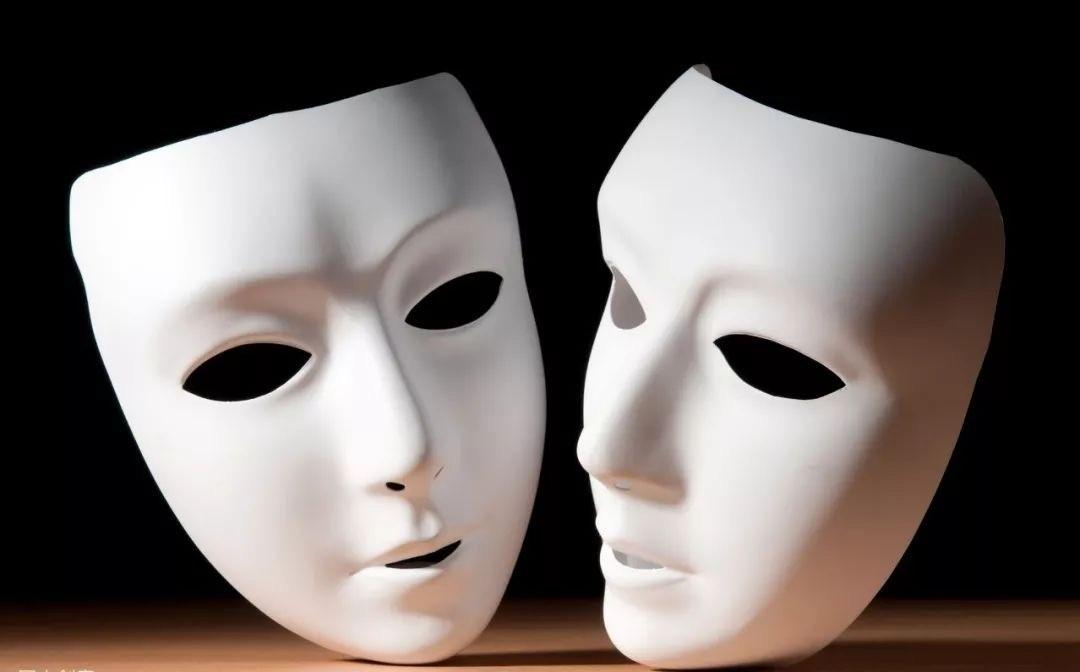


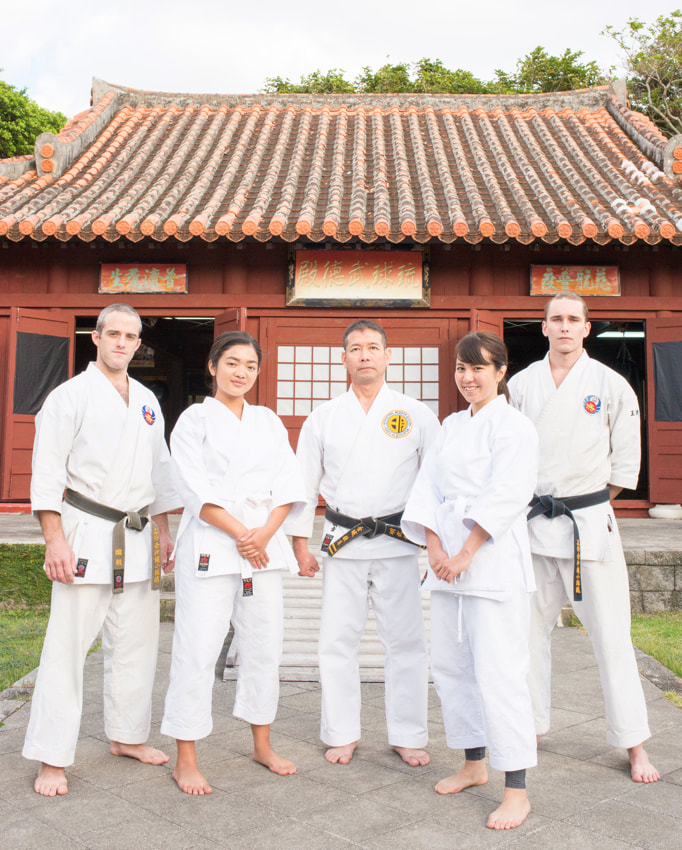












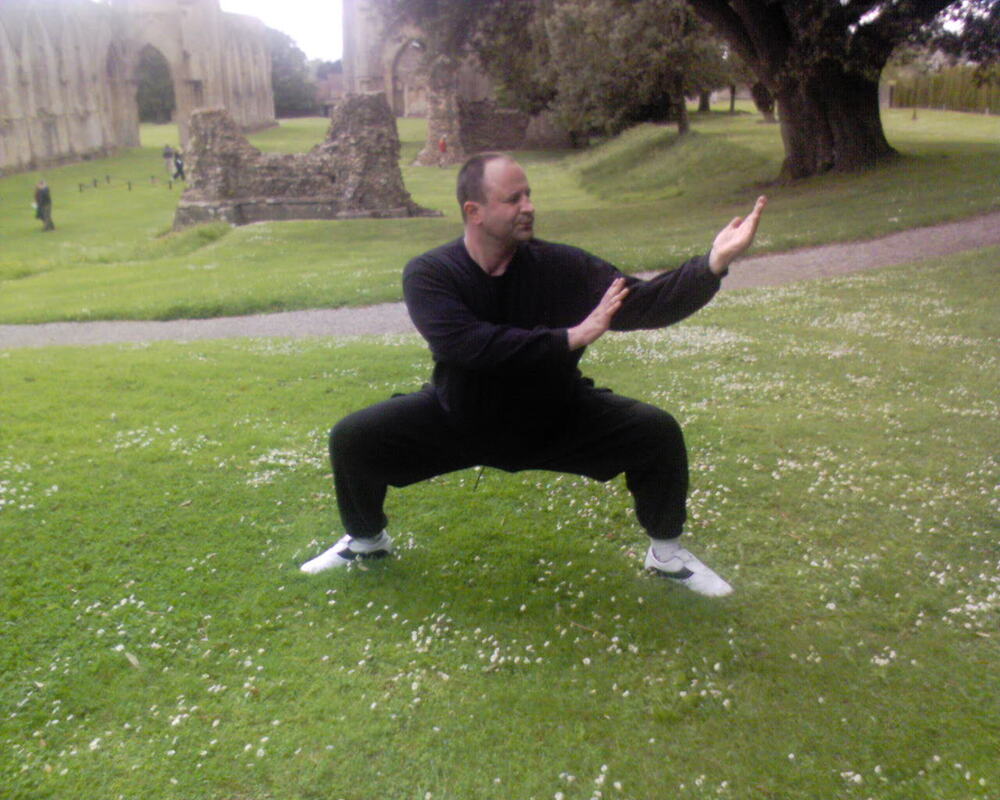
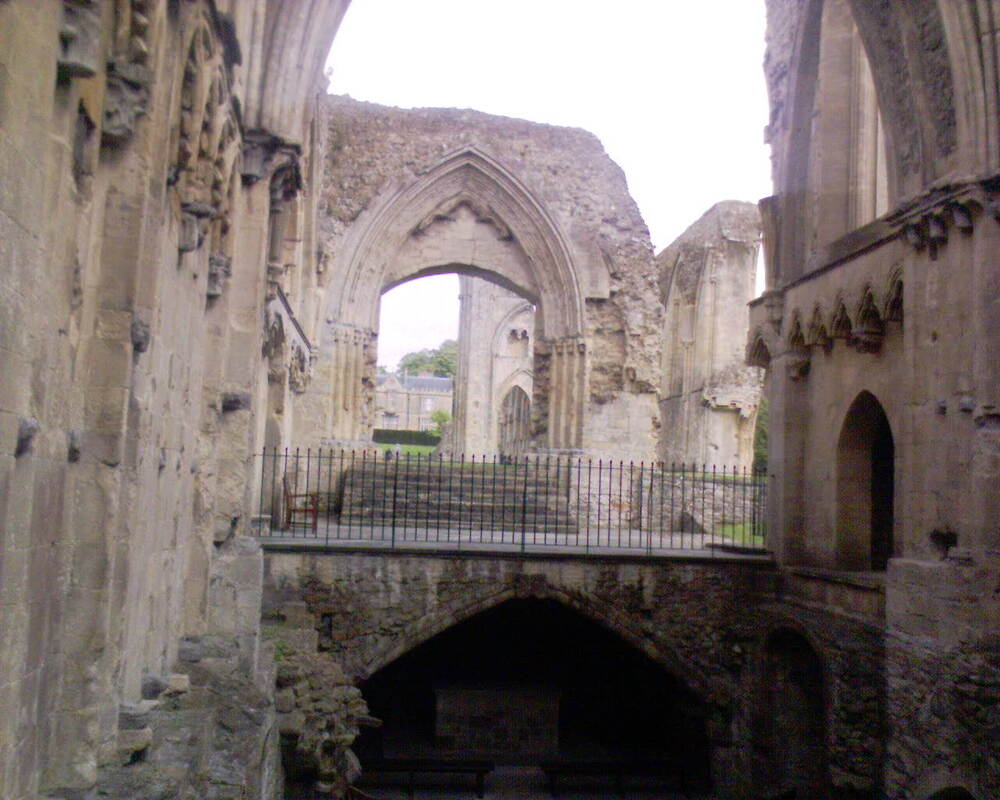

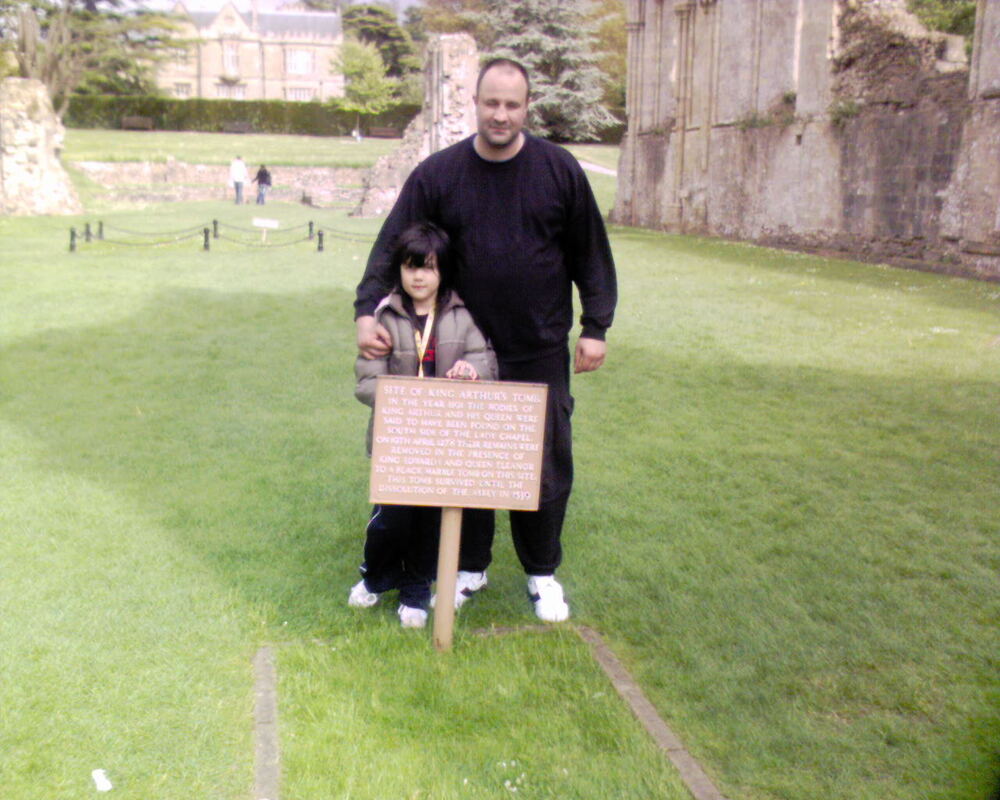
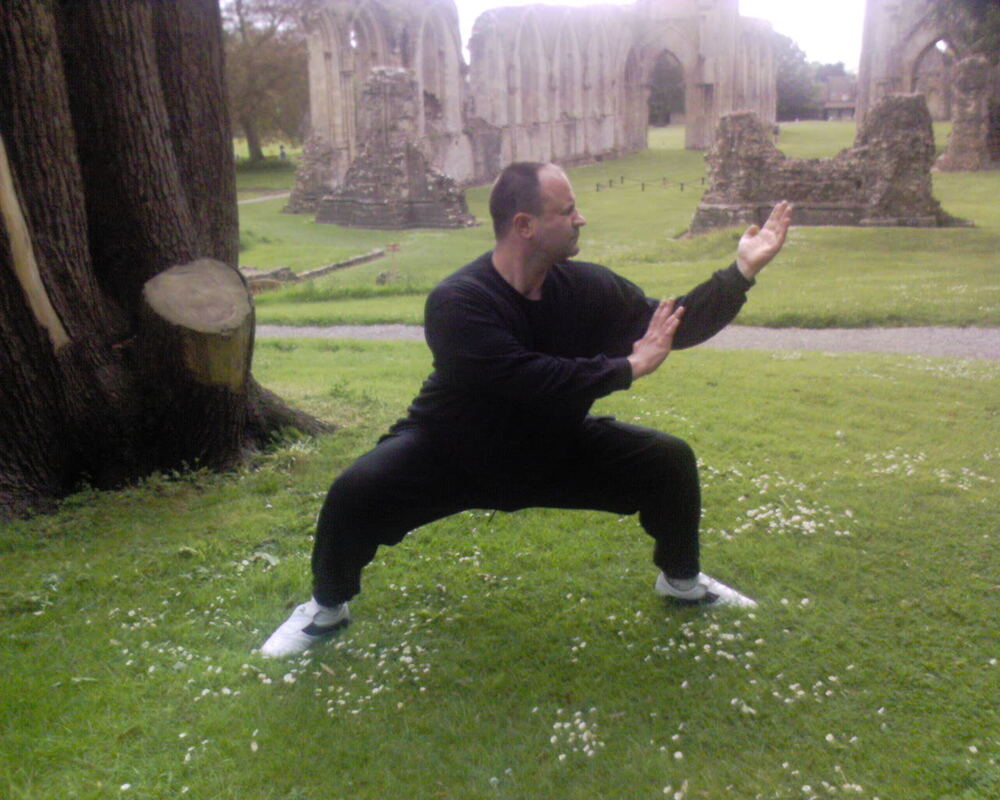

 RSS Feed
RSS Feed